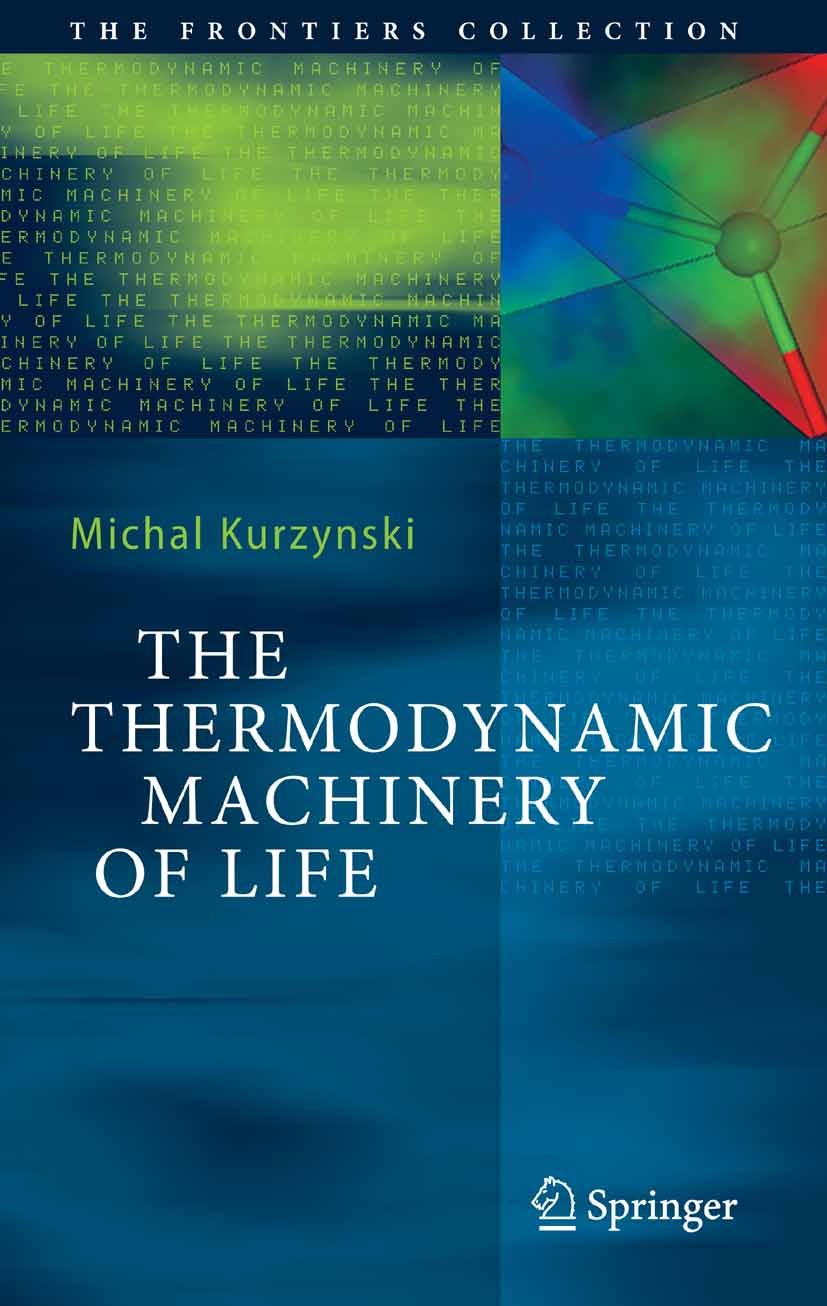| 书目名称 | The Thermodynamic Machinery of Life |
| 编辑 | Michal Kurzynski |
| 视频video | http://file.papertrans.cn/922/921208/921208.mp4 |
| 概述 | A must for all biophysicists and cell biologists as well as interdisciplinary interested physicists and chemists.Includes supplementary material: |
| 丛书名称 | The Frontiers Collection |
| 图书封面 |  |
| 描述 | Thermodynamics was created in the ?rst half of the 19th century as a theory designed to explain the functioning of heat engines converting heat into mechanical work. In the course of time, while the scope of research in this ?eld was being extended to a wider and wider class of energy transformations, thermodynamics came to be considered as a general theory of machines identi?ed with energy transducers. Imp- tant progress in biochemistry in the ?rst half of the 20th century, and in molecular biology in the second half, made it possible to think of treating even living organisms as machines, at least on the subcellular level. However, success in applying thermodynamics to elucidate the phenomenon of life has been rather mitigated. Two reasons seem to be responsible for this unsatisfactory s- uation. Nineteenth century thermodynamics dealt only with simple (homogeneous) systems in complete equilibrium. Although during the 20th century a nonequilibrium thermodynamics was developed, sta- ing with the Onsager theory of linear response and ending with the Prigogine nonlinear theory of dissipative structures, these theories still concern the originally homogeneous systems. Because living |
| 出版日期 | Book 2006 |
| 关键词 | Biological molecular machines; Biophysics; Cytoplasma; Enzymatic catalysis; Nonequilibrium thermodynamic |
| 版次 | 1 |
| doi | https://doi.org/10.1007/3-540-33654-0 |
| isbn_softcover | 978-3-642-06284-1 |
| isbn_ebook | 978-3-540-33654-9Series ISSN 1612-3018 Series E-ISSN 2197-6619 |
| issn_series | 1612-3018 |
| copyright | Springer-Verlag Berlin Heidelberg 2006 |
 |Archiver|手机版|小黑屋|
派博传思国际
( 京公网安备110108008328)
GMT+8, 2025-11-14 23:06
|Archiver|手机版|小黑屋|
派博传思国际
( 京公网安备110108008328)
GMT+8, 2025-11-14 23:06


